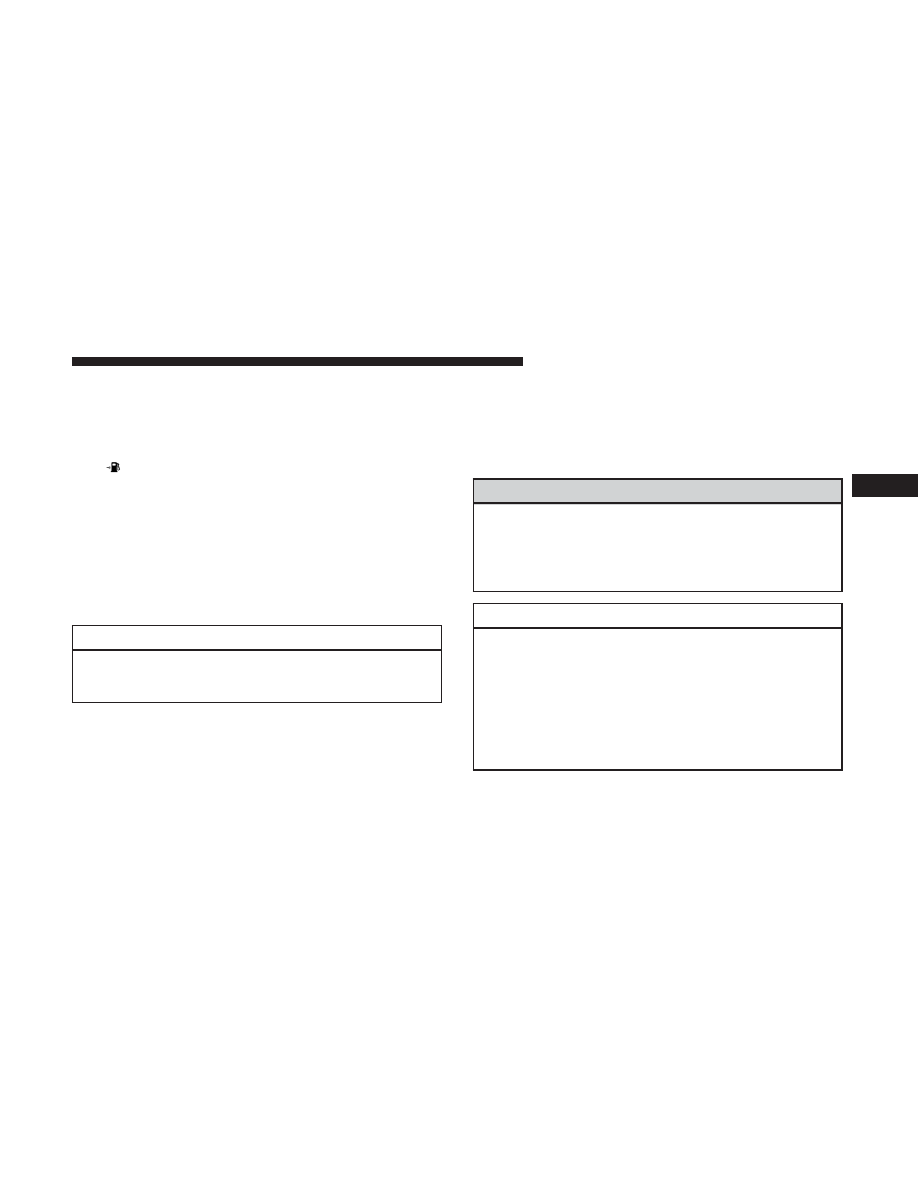Jeep Wrangler JK (2018 year). Instruction - part 12

Instrument Cluster Descriptions
1. Fuel Gauge
• The pointer shows the level of fuel in the fuel tank
when the ignition switch is in the ON/RUN position.
•
The fuel pump symbol points to the side of the
vehicle where the fuel filler door is located.
2. Speedometer
• Indicates vehicle speed.
3. Tachometer
• Indicates the engine speed in revolutions per minute
(RPM x 1000).
CAUTION!
Do not operate the engine with the tachometer pointer
in the red area. Engine damage will occur.
4. Temperature Gauge
• The temperature gauge shows engine coolant tem-
perature. Any reading within the normal range indi-
cates that the engine cooling system is operating
satisfactorily.
• The gauge pointer will likely indicate a higher tem-
perature when driving in hot weather, up mountain
grades, or when towing a trailer. It should not be
allowed to exceed the upper limits of the normal
operating range.
WARNING!
A hot engine cooling system is dangerous. You or
others could be badly burned by steam or boiling
coolant. You may want to call your authorized dealer
for service if your vehicle overheats.
CAUTION!
Driving with a hot engine cooling system could dam-
age your vehicle. If the temperature gauge reads “H”
pull over and stop the vehicle. Idle the vehicle with the
air conditioner turned off until the pointer drops back
into the normal range. If the pointer remains on the
“H”, turn the engine off immediately and call your
authorized dealer for service.
4
GETTING TO KNOW YOUR INSTRUMENT PANEL
179